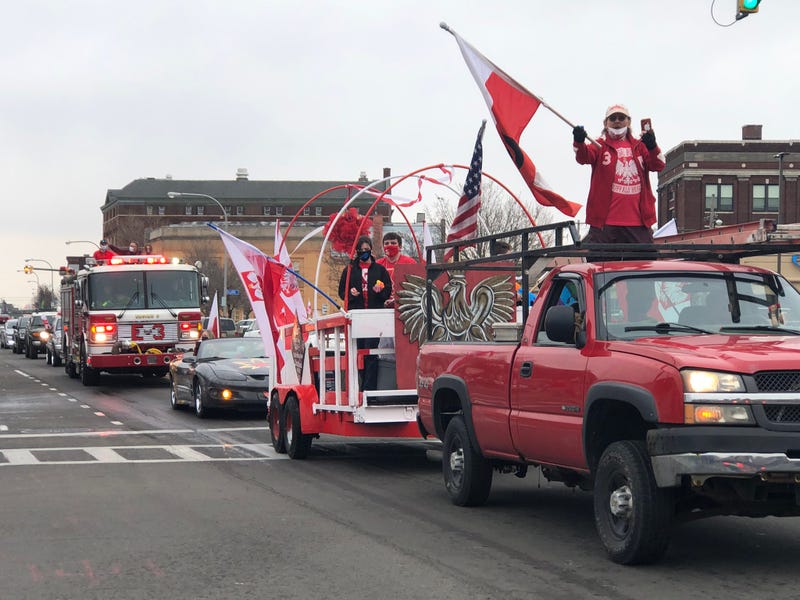
Buffalo, N.Y. (WBEN) - Monday marks the return of the annual Polish celebration in East Buffalo that signifies the end of Lent and the beginning of spring in Western New York.
The ever-popular Dyngus Day returns on Monday, as the community is bracing for one of the largest celebrations of Polish-American culture, heritage and traditions in the country.
Listen to WBEN now!
While many across the region are familiar of what Dyngus Day brings to the table every year, there are plenty of others who either may not be entirely familiar with the yearly tradition, or have little-to-no knowledge of what the festivities are all about.
To provide some clarity on the Dyngus Day tradition in the City of Buffalo, WBEN took the time to chat with Eddy Dobosiewicz - President of Dyngus Day Buffalo - as well as Bernadette Pawlak - former coordinator of the Dyngus Day Parade - for their perspective on all that Dyngus Day has to offer:
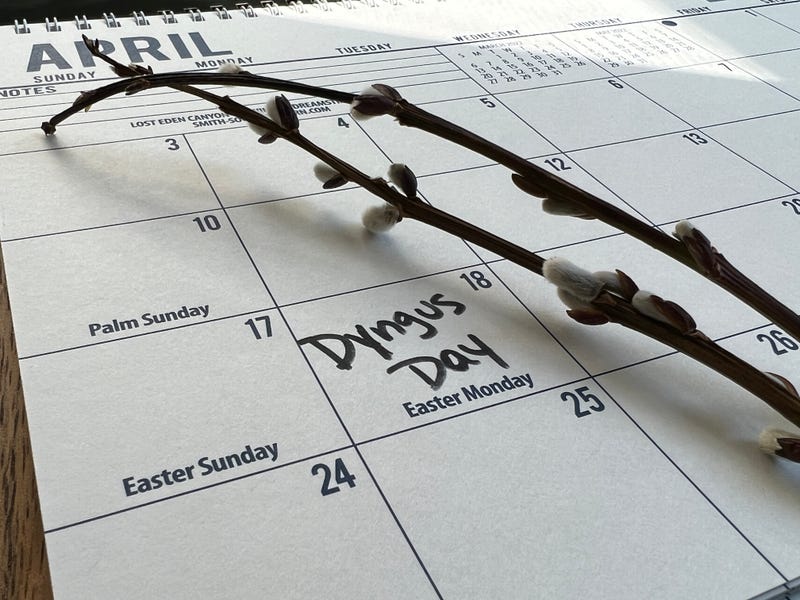
What is Dyngus Day?
Dobosiewicz: "Dyngus Day is a celebration that signifies, basically, the end of Lent and the beginning of spring. I always equate it to a reverse Mardi Gras in that before Lent starts, we have Mardi Gras, we have Fat Tuesday. Fat Tuesday is the celebration the day before Lent starts, and Dyngus Day as a celebration the day after Lent ends. That's really the crux of it. It really is a Polish tradition that goes back a couple thousand years, at least 1,000 years, but it has been turned into a Western New York thing."
Pawlak: "Dyngus Day is always the day after Easter, no matter what year it is. It is the occasion to celebrate the end of Lent. Especially in the Polish Catholic tradition, it was a very solemn period, a period of giving things up, including foods and entertaining and things like that. This was the opportunity for everyone to let their hair down."
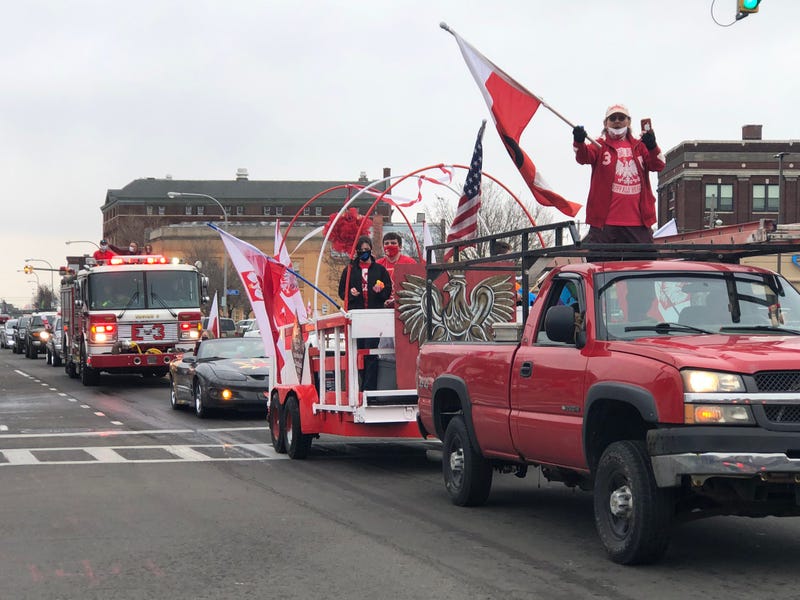
When did Dyngus Day get started in Buffalo?
Dobosiewicz: "In the '60s, there was a private club on the East Side of Buffalo, which was predominantly Polish at that time, the Chopin Singing Society used Dyngus Day as a theme for a fundraising party. It took on a life of its own really because of the quirky traditions that are associated with it.
"In 2007, we instituted the parade, the very first parade, and really right off the bat, we kind of knew we were onto something. By the second year, we knew it had taken hold. By the third year, it was unstoppable. Then Anderson Cooper made fun of Dyngus Day in one of his broadcasts, and the response was so overwhelming, we got a million dollars worth of publicity as a result of that. People still talk about that incident, because we got so much notoriety from it. Now, Dyngas Day in Buffalo is really known throughout the world."
Pawlak: "It's been a Polish tradition over the years. Apparently right now, I have not been to Poland on Dyngus Day, but apparently we celebrate it better than they do. It started back in the 1960s when Judge Ann Mikoll used it as a fundraiser for Chopin Singing Society, and it was an East Side kind of thing. Years and years ago, it was the bars and restaurants down on the East Side that would celebrate, and you go from one place to another. Then it kind of took a dip for a while, and it was revived, now probably almost 20 years ago. Now it has taken on a whole new life and a whole new meaning."
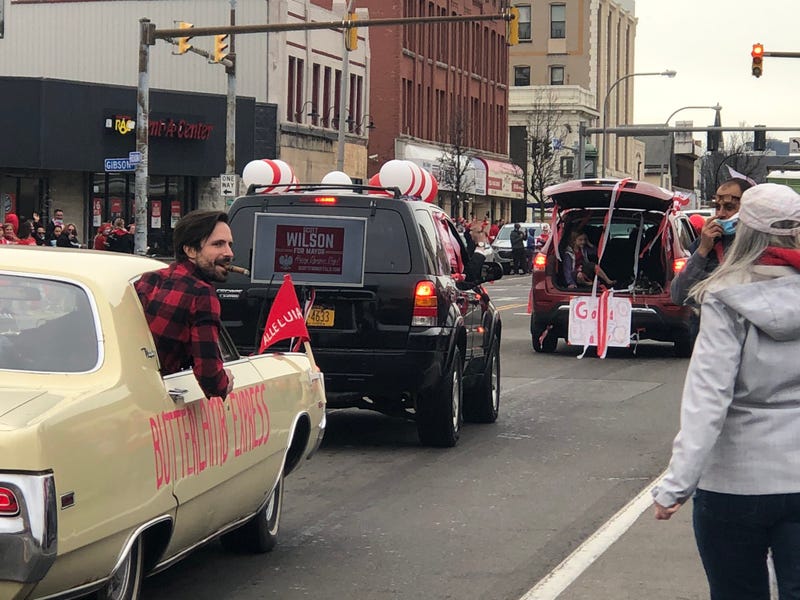
Walk us through a typical Dyngus Day in Buffalo:
Dobosiewicz: "Most of the events begin around noon, however, there's one place in Kaisertown - Porky's Tavern - that opens at 8 a.m. Those people are very committed, or maybe they should be, but we love them. But most of the events happen around noon. There's a mass that takes place just before that at 11:30 a.m. this year at Corpus Christi [Church], and then afterwards, the parties begin. Most typical Dyngus Day parties consist of live entertainment - primarily Polka bands - there are ethnic dancers and a lot of the venues. There's traditional Polish food, obviously we have Sobieski vodka from Poland, we have Tyskie beer from Poland. It's a very authentic experience in what you see and what you hear, but also what you consume."
Pawlak: "You can start as early in the morning as you want. I know some places start with a brunch, some places even used to do a blessing of instruments on Easter evening the night before. I know a lot of places start around noon, usually very family friendly, where there's a luncheon or a brunch. A lot of Polish beer comes out, a lot of pierogies and kielbasa and gołąbki. Usually it's starting during the day, and when I was doing the parade a few years back, usually the family-friendly part would go up until the parade time, and then after the parade, the children generally went home and the adults did their serious partying."
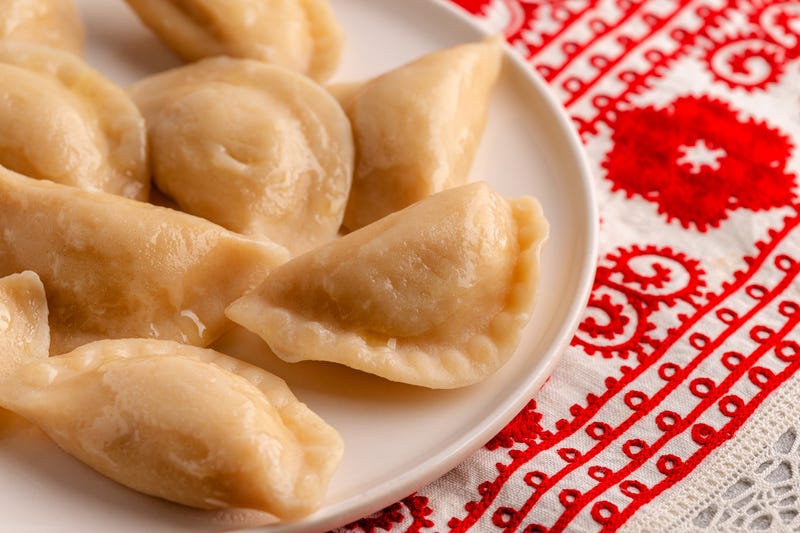
What makes the parade so popular to experience/take part in?
Dobosiewicz: "I think the reason the Dyngus Day Parade is so popular is because it's so unconventional. It is not your typical parade, although there are elements of a typical parade involved in it, but there's a real palpable sense of pride, which is something that was lacking for a long time. For many generations, people denied their Polish heritage because of the prevalence of Polish jokes, and people were embarrassed. They would claim to be Slavic, or they changed their name, or they anglicized it. The parade kind of gave people a focal point to re-instill some of that pride. Right from the very beginning, we started seeing in real short order that people would show up to the parade dressed in red and white, and waving Polish flags. Now there are points in the parade where there are large crowds gathered, where it looks like just a sea of red and white. It's amazing, and it's a real fun parade. We don't get into politics, we don't get into any social messaging. The messaging is that winter is over, spring this year, let's have some fun. We've been cooped up now for many months, let's get outside."
Pawlak: "There is a parade on the East Side of Buffalo, there's also one in North Tonawanda, where it's pride, it's Polish pride. You don't have to be Polish to either attend or participate, but it's always wearing red and white. You know how everyone's Irish on St. Patrick's Day, well, everyone's Polish on Dyngus Day. So everyone of every ethnicity, of every religion, race, everyone's invited. It's just a chance to celebrate Polish heritage."
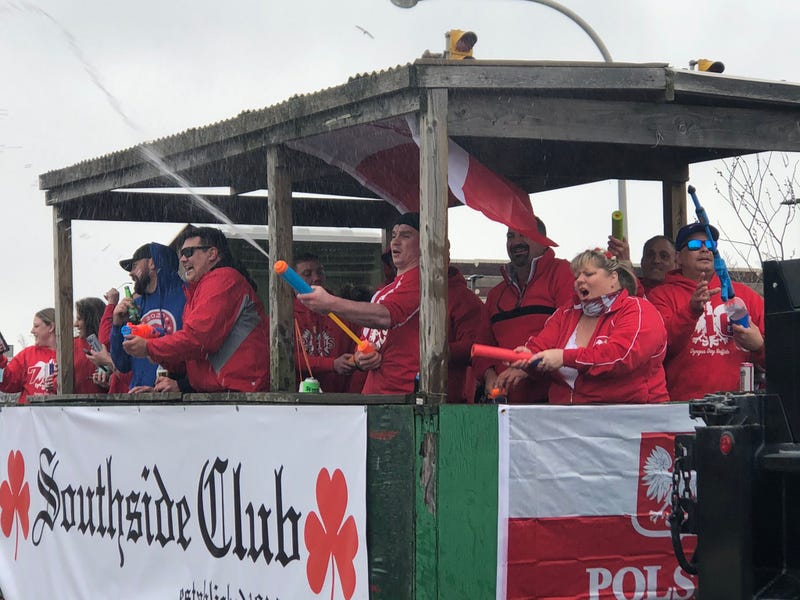
Why are pussy willows and squirt guns a staple of the Dyngus Day parade?
Dobosiewicz: "The significance of the pussy willow, as well as the water, is about the beginning of a new growing season, a re-birth re-awakening. That's what Dyngus Day is all about. The pussy willow signifies the budding of new nature, of new plants growing. The pussy willow bud is the first bud of the season, so that signifies the new growing season and things starting over. Water is life. Water signifies not only the essence of life, but it also signifies the baptism of Poland and of humanity, if you will. Back in 966, the King of Poland, at that time, adopted Christianity as the national religion. That's how Dyngus Day became adopted by Poland to signify that significance of religion to Poland and to the Polish culture."
Pawlak: "That is a natural Polish tradition. The pussy willows were always the first blossoms of the spring, so that was where the pussy willows came in. If you notice when you're driving down the road now, your little pussy willows are popping. So you use those to go after a member of the opposite sex that you might have some interest in, and it was a little flirtation device, where you kind of tap them lightly on the legs to say, 'Hey, look, I'm interested in you.'
"The real tradition with the squirt gun wasn't a squirt gun to start. It was the use of a cheap perfume. You were supposed to take this cheap perfume and sprinkle it on, again, the person you are interested in to let them know, 'Hey, I've got my eye on you.' So as it slowly evolved from the perfume to, thank goodness, the squirt gun, it's just a little form of flirtation."
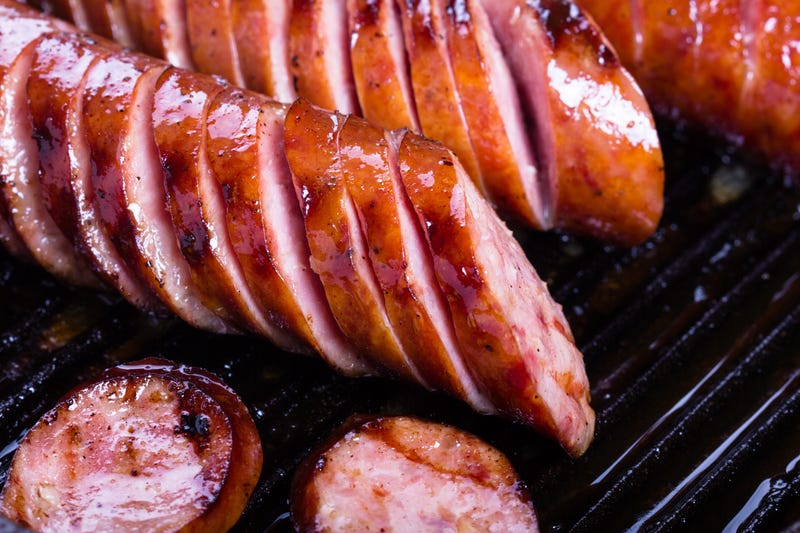
What else about Dyngus Day festivities should stand out to participants?
Dobosiewicz: "A lot of the traditions are really Easter traditions, because they go hand-in-hand. The foods that are associated with Dyngus Day are really the foods of Easter Sunday. A święconka basket, in the Polish culture, people would normally fill a basket with all the foods that they gave up for Lent. Whether they were meats or sweets, or fatty things like butter, they would put them into a basket, along with things like horseradish to remind us of the bitterness that Jesus went through during his passion, they will go to a church on Saturday, the day before Easter, and have been blessed. Then they will consume those goods on Easter Sunday morning. So those same foods are very much associated with Dyngus Day itself.
"More Krupnik is consumed in Western New York than anywhere else in the world, per capita. The whole reason that is, is because when we started promoting Dyngus Day, we had some sponsors, Sobieski vodka, and they also distributed Krupnik. We needed some some kind of a beverage that was palatable to both men and women, and just drinking shots of vodka really didn't cut it with a lot of gals. So we started using Krupnik, because it was easy to pronounce, quite honestly. Actually, I would say something that is more popular in Poland as a sweet spirit would be Wiśniówka, which is a cherry-based liquor, but it's hard to pronounce for people who don't speak the Polish language. Krupnik was much easier. As a result, Buffalo became synonymous."
Pawlak: "It's a chance to flaunt our heritage. It's the Krupnik, the Polish beers. Until then, unless you lived on the East Side or you were exposed to a Polish family, you didn't know about those things. When we first started the Dyngus Day tradition of the parade, and at that time I was volunteer at the Central Terminal, we had a party there, it was very interesting to see young people, mostly a lot from U.B., coming from all nationalities and going, 'What's this all about?' and trying the different Polish foods and drinks. They became extremely interested in it, which we were very flattered. So it was a chance to flaunt our products, our heritage and our traditions, and have somebody else interested in them, which was pretty awesome."
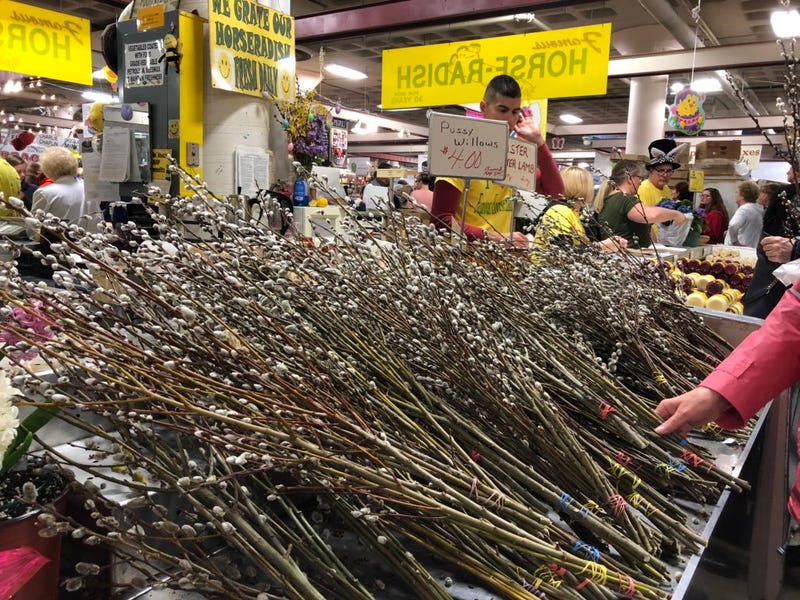
Explain the significance of the Broadway Market with Dyngus Day celebrations:
Pawlak: "The Broadway Market was the heart of Polonia. It was the place that you went every Saturday morning to get all your foods and, at that time, you could get a chicken, you could get a rabbit, you could get almost anything down at the Market. You knew all the vendors, they all knew you. At that time Sattlers was across the street from the Market. When I was very little, we didn't have malls or plazas, we went to that area. That was the heart of Polonia. Every nationality had their region, and that was ours. No matter where you lived, you could live walking distance or you could live a slight car drive away, which I did, that was where you went. You just got everything you needed from the homemade kielbasa, I remember tub butter when I was a kid - it was a big block of butter - and they would just slice a piece off and get that to go home, and fresh baked goods. Everything you wanted for the whole week, you would find right there."
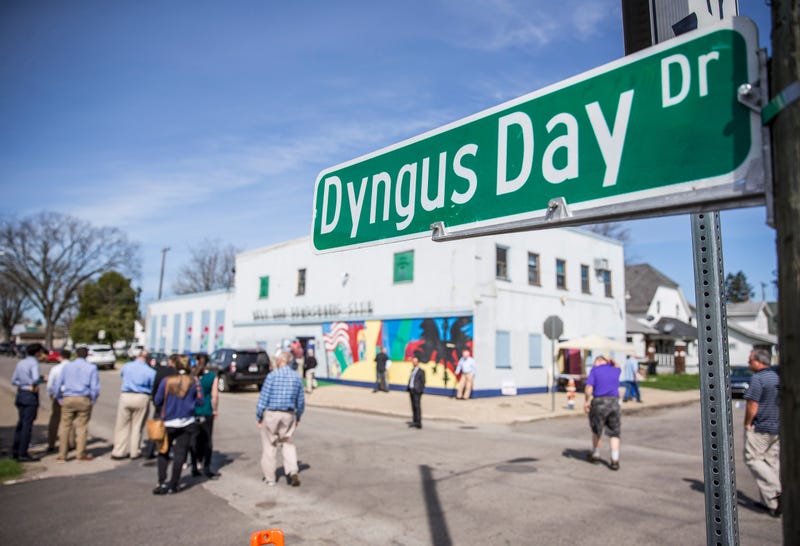
Where else is Dyngus Day celebrated in the United States?
Dobosiewicz: "There's a lot of places now that have some kind of an observance throughout North America, but nothing even comes remotely close to what happens in Buffalo. This has really become a Western New York, Buffalo kind of thing. Buffalo is as synonymous with Dyngus Day as it is with sponge candy and bleu cheese dressing. Although there are events that take place in other places. I would say probably the closest would be Cleveland, but even Cleveland - we started that about 10 or 12 years ago, but it's turned into a different kind of a thing. It's more of a pub crawling kind of a situation over there. Here in Buffalo, we always emphasize the culture, the history, the customs, the ancestry, the connection to Poland and Polonia. Poland and Polonia, they are two separate things, but they're both equally as important in the Dyngus celebration. But there are observances in numerous places in Florida, in Arizona, in Boston and Washington D.C., in New Orleans. It really is taking on a life of its own."
Pawlak: "I do understand that I think Cleveland and Toledo may have celebrations, I'm sure other cities with Polish communities. But I know the very last time that I ran the parade, I was waiting on my corner, checking in a lot of the floats that were attendees for the parade. All of a sudden, people start coming up to me from Tennessee and Kentucky, places from all over. I think somebody was even from California, and they came up to me like, 'Where should we go? We have this brochure, and where do we go to eat? Where should we go to watch it?' It was really cool that all these people were starting to come from all around the U.S., and even Canada and we used to have an entry that came from Australia. I always envisioned it to be you went to Mardi Gras before Lent, the original one was in New Orleans, and I always wanted to bookend it with Dyngus Day in Buffalo after Lent. I'm hoping that someday that will happen."
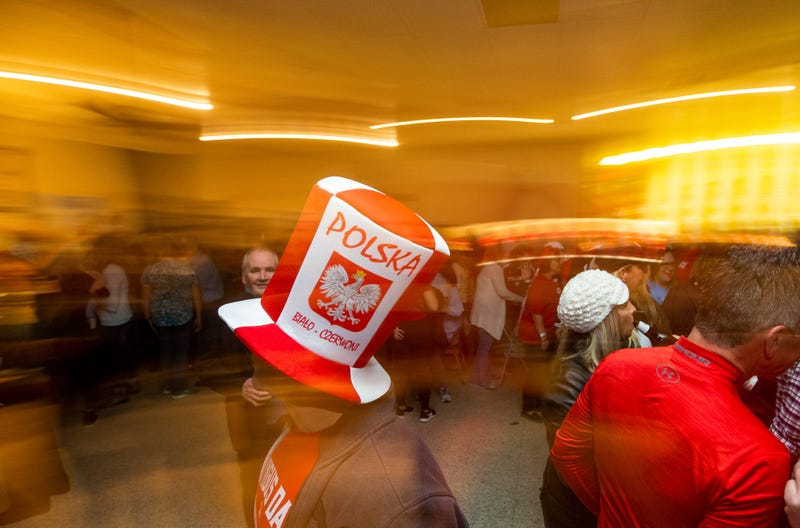
What is it about the Dyngus Day celebration in Buffalo that puts it above anywhere else?
Dobosiewicz: "Buffalo is, undoubtedly, the Dyngus Day capital of the world. I would venture to say that no matter what, there's nothing that's going to compare with the celebration here, because we have owned it for so long. Buffalonians aren't going to give it up. It's just like the chicken wing, it started here, and it's always going to be a Buffalo thing, even though you can pick them up anywhere in the United States.
"It's a very family friendly kind of a situation. Bring your kids, bring your grandkids, have fun. Teach them, share with them the culture of your ancestry, of their ancestry, no matter what their ancestry may be. On Dyngus Day, you don't have to be Polish to celebrate. Everybody's Polish on Dyngus Day, and just remember that Dyngus is not a day, it's a state of mind."
Pawlak: "First of all, I think time. As time evolved, I mean, it started out very small. The very first parade had maybe like 20 entries with little groups and dancers, and maybe some singers and stuff. But it's grown, and people have realized that this is a really awesome time to celebrate. It's an awesome thing to celebrate, and it's like St. Patrick's Day, except it's Polish. These are the things that we want to show the world that we are proud of. Our heritage, our food, our traditions, and we hope that they will come here to Buffalo, because this is where basically the U.S. version of Dyngus Day has started."

